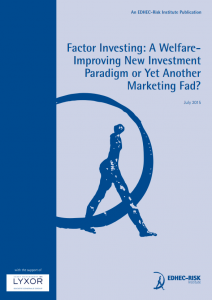

Factor Investing: A Welfare-Improving New Investment Paradigm or Yet Another Marketing Fad?
This paper examines the relative efficiency of standard forms of practical implementation of the factor investing paradigm based on commonly-used factors in the equity, fixed-income and commodity universes. Investment practice has recently witnessed the emergence of a new approach known as factor investing, which recommends that allocation decisions be expressed in terms of risk factors, as opposed to standard asset class decompositions. To answer the question of whether factor investing is truly a welfare-improving new investment paradigm or whether it is merely yet another marketing fad, the paper identifies mathematical conditions under which it is expected to generate welfare gains for asset owners and provides an empirical measure of such gains.
Author(s):
Summary:
This paper examines the relative efficiency of standard forms of practical implementation of the factor investing paradigm based on commonly-used factors in the equity, fixed-income and commodity universes. Investment practice has recently witnessed the emergence of a new approach known as factor investing, which recommends that allocation decisions be expressed in terms of risk factors, as opposed to standard asset class decompositions. To answer the question of whether factor investing is truly a welfare-improving new investment paradigm or whether it is merely yet another marketing fad, the paper identifies mathematical conditions under which it is expected to generate welfare gains for asset owners and provides an empirical measure of such gains.
Register to download PDF
Register/Log in| Type : | EDHEC Publication |
|---|---|
| Date : | 09/08/2015 |
| Keywords : |
Risk Management |

